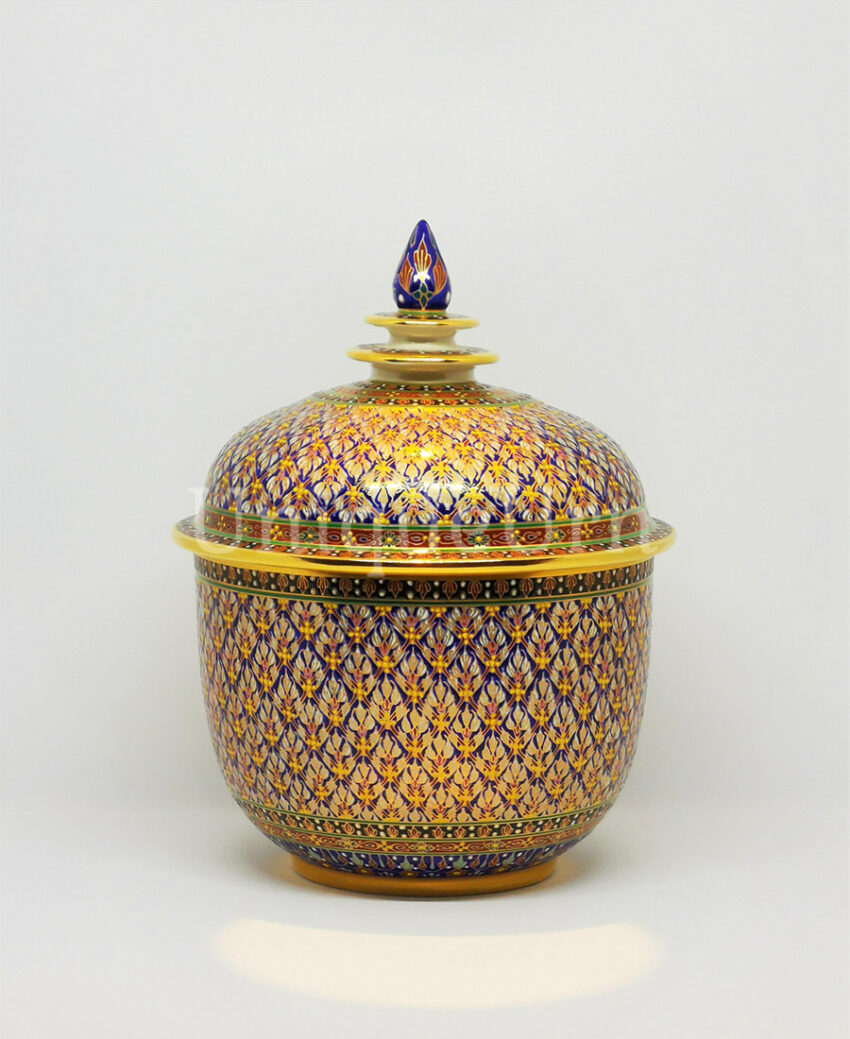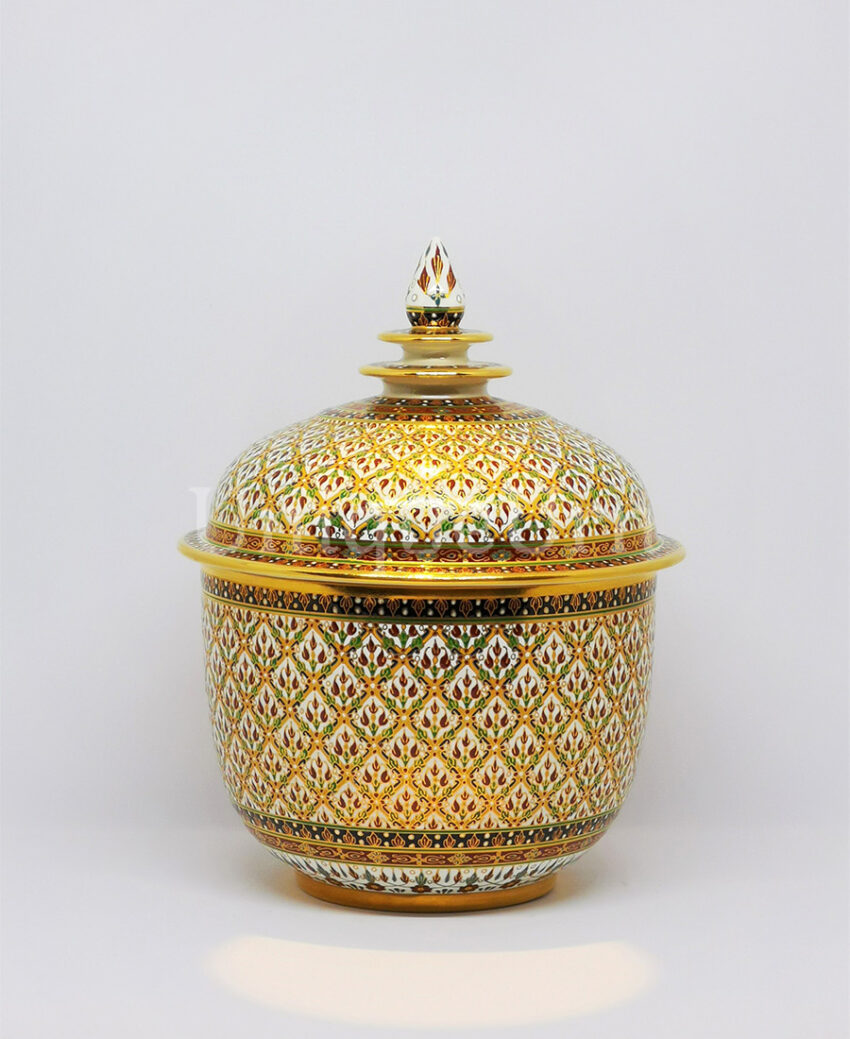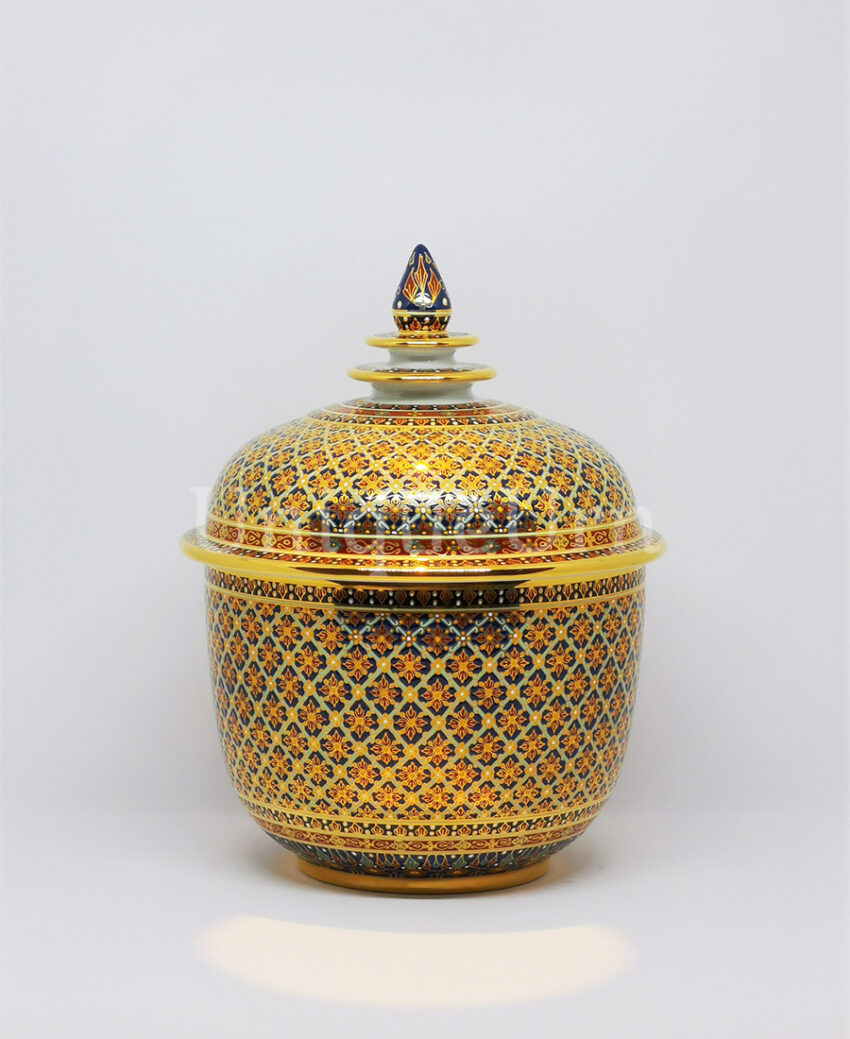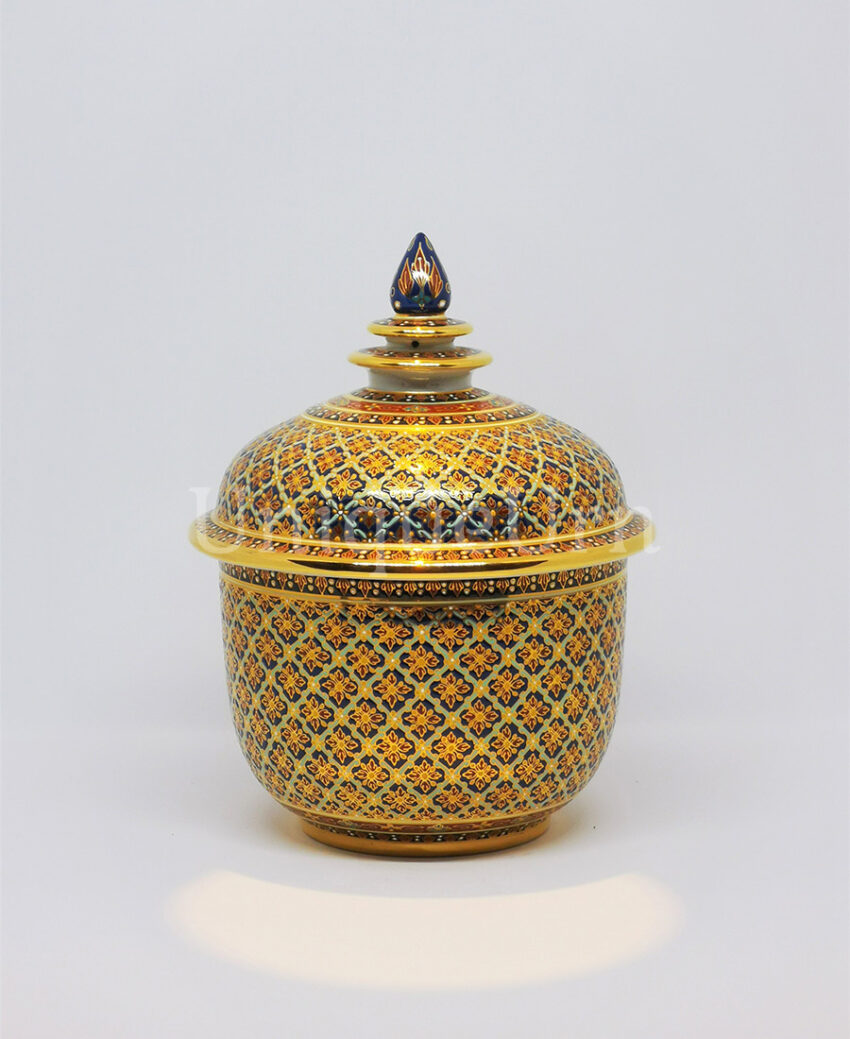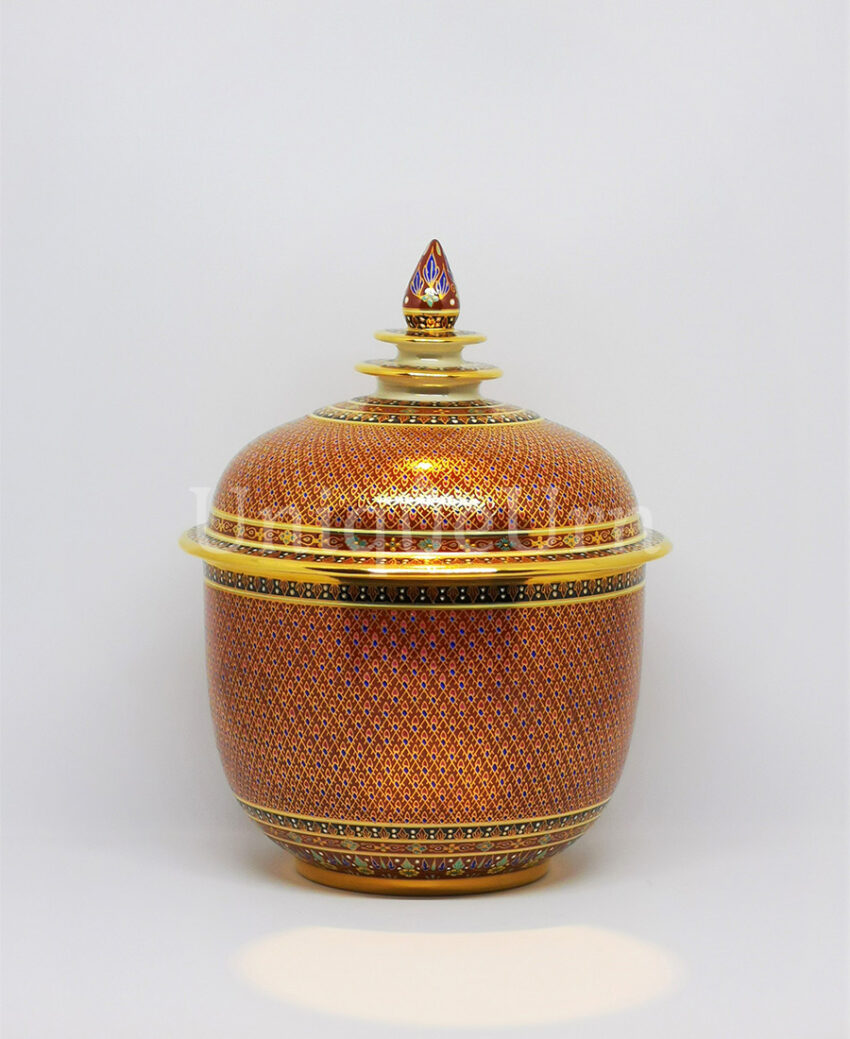ThoChan Covered Urn And Stem Plate Set 7 inch Matt PiKul On Yellow
฿ 19,500.00
| Shape | ThoChan & Stem Plate Set |
| Design | PiKul |
| Type | Matt Porcelain |
| Dimension (cm.) | 19.2 W x 19.2 L x 30.7 H |
| Weight (kg.) | 2.43 kg. |
| Capacity | 171.88 cubic inches 2,750 ml. |
1 in stock
ThoChan is one of the normal vessels of Thai covered jar/ urn which looks simplicity but elegance. The unique top cover is in the lotus bud shape which is placed on the tiered bases called "Chatra". The covered body is the dome shape with a thick durable rim.
The shape of this jar/ urn is fat with a broad mouth and proportionally wider base which can hold capacity on each size that implies wishes of the fostering and sustaining with the exuberance of life but it has a short foot rim.
In the past, this jar/ urn was often used to contain food as in tureen used at the Royal table but a very small size used for fragrances and face powders.
Because of its exclusiveness so it is extensively used for cremation urn for the loved ones.
The 6 inches or larger size can be used for adult urn but the smaller than 6 inches size can be used for keepsake or child & infant urn.
Stem plate is a plate with a pedestal which represents the high respect, glorification and compliment can be used to contain things as food, fruit, flowers, accessory, etc. with very useful, which put on beside of the ThoChan covered jar/ urn or it also can be used to put the same size of ThoChan once placed on its pedestal gives it extra height and more personable.
PiKul design is flower notable for its fragrance and visual aesthetic. The pattern originated in the Reign of King Rama II (1809-1824). PiKul is a big tree often grown in temples. It has high strong stalks and its shape resembles and smells like Jasmine.
The painted design on the pieces inspires and creates a unique pattern, which has been reduced in size to that of the patterns painted on the walls and post of temples, including other important ancient places called “PraJamYam” (pattern fixed for auspices), which is the name of a pattern in the figure of a flower with 4 sparkle petals placed section by section and separated by other patterns. This is believed to be auspicious and guards against demons and to bring prosperity for those important places, i.e. north, south, east, and west. It creates peace and harmony in life.
The original PiKul flower pattern is based on the repetitive trellis technique from wooden vines and was developed to include various designs and colors as the PiKul KarnTor and PiKul SakKoRad design are replaced with tropical leaves motifs, even the PiKul KaJung and PiKul KarnLeam design are replaced with geometric forms of rectangle or rhombus shapes, but the PiKul Golden design minimizes the original size of the PiKul flower which is tiny for making the delicately unique design.
Packing & Shipping
Our professional packing process is including three layers. Firstly, we will wrap each piece with soft paper to protect from any scratch, then the pieces will be wrapped with layer of air bubble regard to broken prevention. Last, we will put them in cardboard boxes and surround them with polystyrene foam sheets to protect them from moving inside the big box. Then our shipment is ready to deliver.
Our UniqueUrn is cooperating with the professional shipping companies to arrange the exquisite items of art for your loved one to your hand in appropriate time. We guarantee the new pieces for replacement if your shipment item is broken during the transportation. By providing us the photos of the broken items and the package to us, so after claiming processed with the shipping company, we will replace the new one for you.




